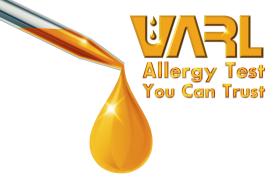Pet Owners
Common signs of allergy in dogs and cats
● Excessive scratching
Occasional scratching here and there is normal in dogs and cats. While cats have a tendency to groom their fur often should not be mistaken as manifestation of allergy, the scratching associated with allergic disease will be often and intense, extending well into the night. In dogs the areas where the scratching will be mostly observed are going to be around the head and face, paws, ears, armpits.
● Paw licking and chewing
In dogs with white and light color furs, discoloration of the paws are tell-tale signs of excessive licking. Licking combined with chewing at the paws can very often lead to self-induced trauma with bleeding.
● Recurring ear infection
Persistent ear problems can be the result of allergy. In a high percentage of these cases, food allergy is very often implicated simultaneously with environmental causes. This condition is more prevalent in dogs than cats.
● Hair Loss
Patchy hair loss can be observed in some allergy dogs and cats. This is usually the result of excessive scratching due to allergy.
● Asthma/Respiratory
While the majority of allergic dogs and cats will manifest dermatologic symptoms, a small percentage of allergic animals may have only respiratory issues. Although this allergic manifestation is more commonly found with cats, a smaller percentage is found also with dogs.
● Around the eyes
Discoloration and hair loss around the eyes can be signs of allergy resulting from chronic rubbing of the eyes.
● Gastrointestinal
Gastrointestinal disorders can be manifestation of food allergy. This may occur with or without concurrent skin problems.
● Scooting on rear-end
Some dogs afflicted with allergy may be observed to scoot on their rear ends, the equivalent of licking and scratching of accessible skin areas. Food allergy can be implicated in these dogs.
While all these conditions can be signs of allergy in dogs and cats, they can mimic other skin disease conditions. Only your veterinarian can make an accurate diagnosis of allergy after other conditions have been considered. Blood sample will be taken from your pet and sent to VARL Liquid Gold Allergy Lab to identify the culprit allergens responsible for your pet’s allergy. Once identified, VARL can then formulate the unique customized immunotherapy vaccine in oral or injection treatment to help desensitize your pet to his or her allergies.




